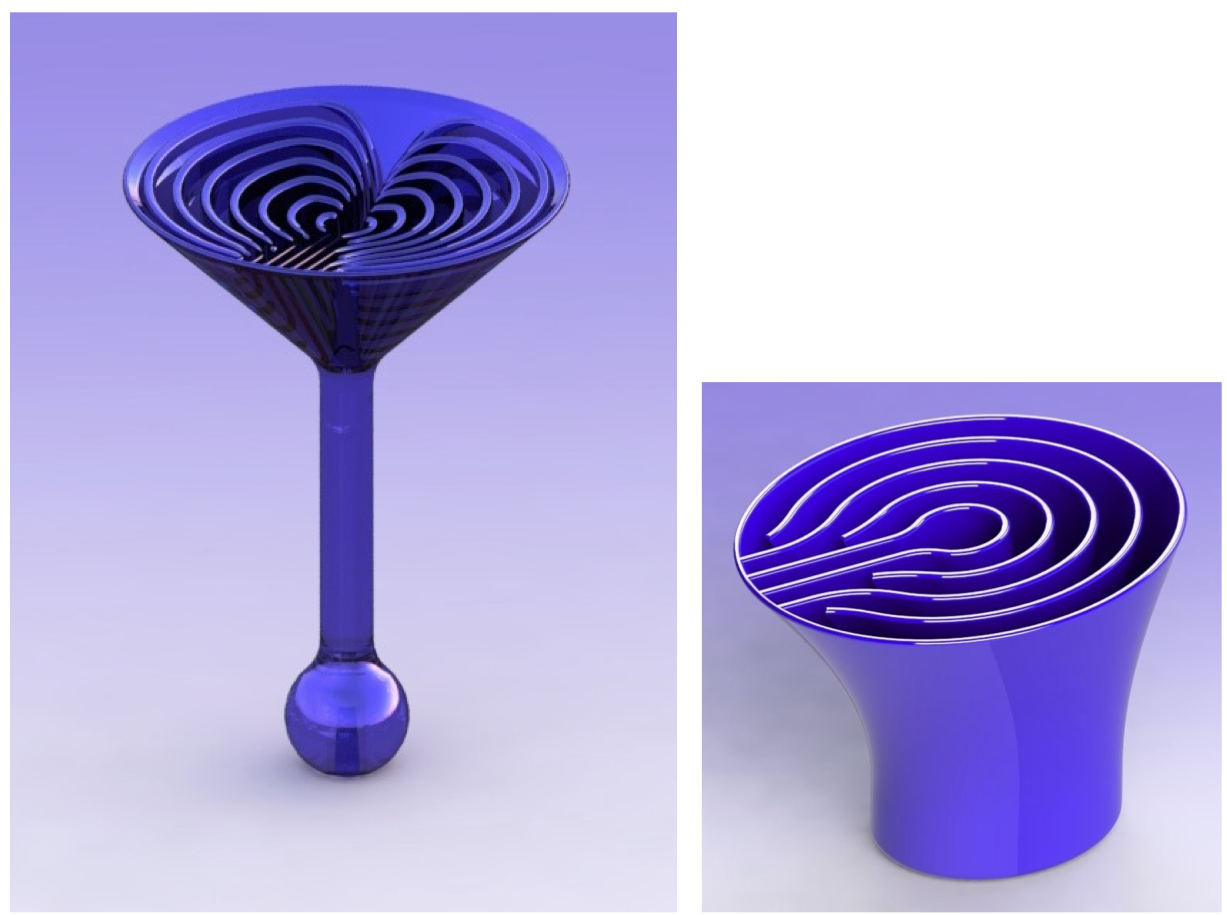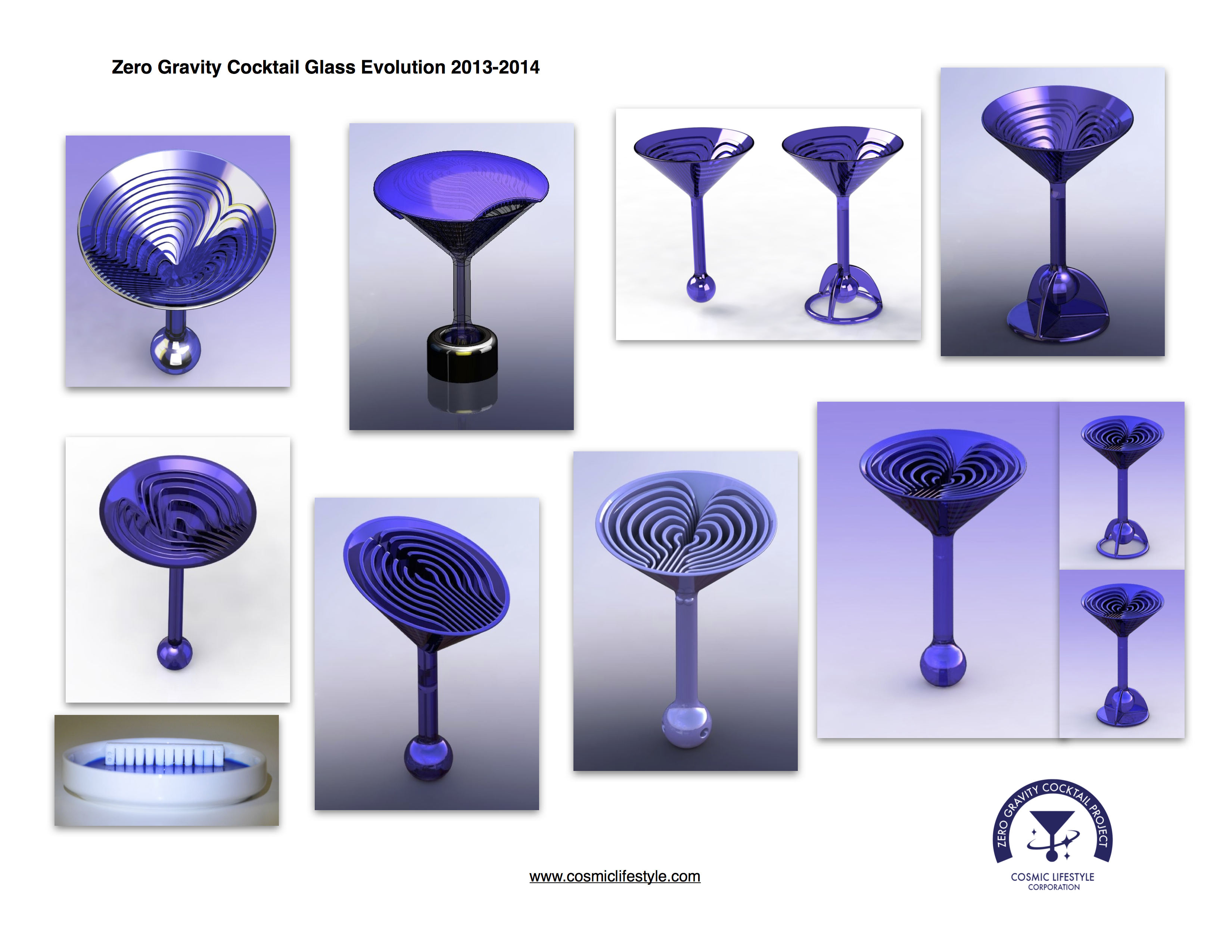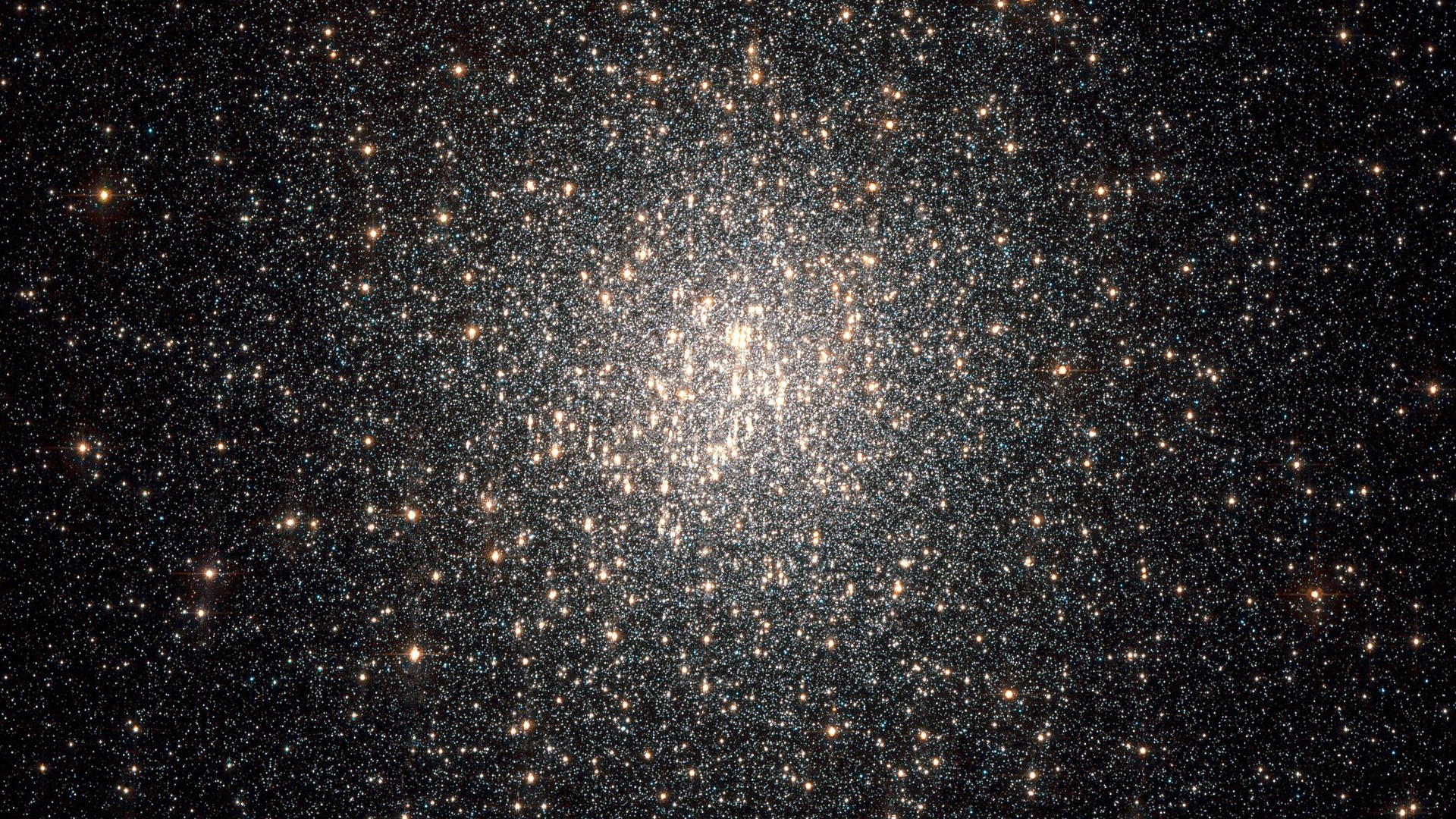This Zero Gravity Cocktail Glass Could Be Out of This World

Astronauts hoping to sip drinks in style may soon have an open-top cocktail glass to look forward to.
Called the Zero Gravity Cocktail Project, the idea is to create an open-top cocktail glass that can be used in space. The glass would use an innovative "groove system" that would keep fluids under control, and only release them when someone takes a drink.
The creators of the glass design, called the Cosmic Lifestyle Corp., are currently seeking funding for the project on the crowdfunding website Kickstarter.com. However, as of this posting, the company has yet to raise $2,000 of the desired $30,000 before the April 2 deadline. [Space Food Evolution: How Astronaut Chow Has Changed]
With current space-based beverage technology, astronauts wishing to quench their thirst must drink from a closed container, using a straw (with the exception of astronaut Don Pettit's zero-gravity coffee "cup"). With the Zero Gravity Cocktail glass, astronauts would be able to drink from something that's more like the drinking glasses used on Earth.
"We are creating an open-air drinking container that allows you to enjoy the aroma of the drink, yet keep the fluids under control. Your mouth completes the connection like a straw and you can suck the drink into your mouth," the Kickstarter page said.
"We are also hoping to inspire the idea of a future when space hotels are in orbit and settlements are on other planets [where] people can relax and enjoy the experience of a quality drink, no matter what the gravity! Design aesthetics is just as important as the technical capabilities, and what is more stylish than a cocktail glass?"
According to the Kickstarter page, some of the requested funding would be used to make several 3D-printed prototypes of the glass, in order to revise and perfect the design. The printing needs to be done on mid- to high-level printers; basic, hobby-grade 3D printers don't work because they can't properly support the structure of the glass, the company said.
Get the Space.com Newsletter
Breaking space news, the latest updates on rocket launches, skywatching events and more!
The money would also be used to test the glass on parabolic flights (flights where an airplane dips and climbs to simulate gravity changes) and also to find a third-party service that could reduce the costs of printing the glasses in the long term.

The company's long-term goal is to 3D print a glass on the International Space Station using a Made In Space printer, but the company did not disclose on Kickstarter when it hopes this will happen.
The concept has received support from the Space Frontier Foundation and the Space Tourism Society, the Kickstarter page said. Advisors to the project include private space traveler Richard Garriott and Jonathan Knowles, a senior advisor at the 3D design firm Autodesk.
To learn more about the Zero Gravity Cocktail Glass Project, visit:
https://www.kickstarter.com/projects/spacemansam/zero-gravity-cocktail-project
Follow us @Spacedotcom, Facebook and Google+. Original article on Space.com.
Join our Space Forums to keep talking space on the latest missions, night sky and more! And if you have a news tip, correction or comment, let us know at: community@space.com.

Elizabeth Howell (she/her), Ph.D., was a staff writer in the spaceflight channel between 2022 and 2024 specializing in Canadian space news. She was contributing writer for Space.com for 10 years from 2012 to 2024. Elizabeth's reporting includes multiple exclusives with the White House, leading world coverage about a lost-and-found space tomato on the International Space Station, witnessing five human spaceflight launches on two continents, flying parabolic, working inside a spacesuit, and participating in a simulated Mars mission. Her latest book, "Why Am I Taller?" (ECW Press, 2022) is co-written with astronaut Dave Williams.
